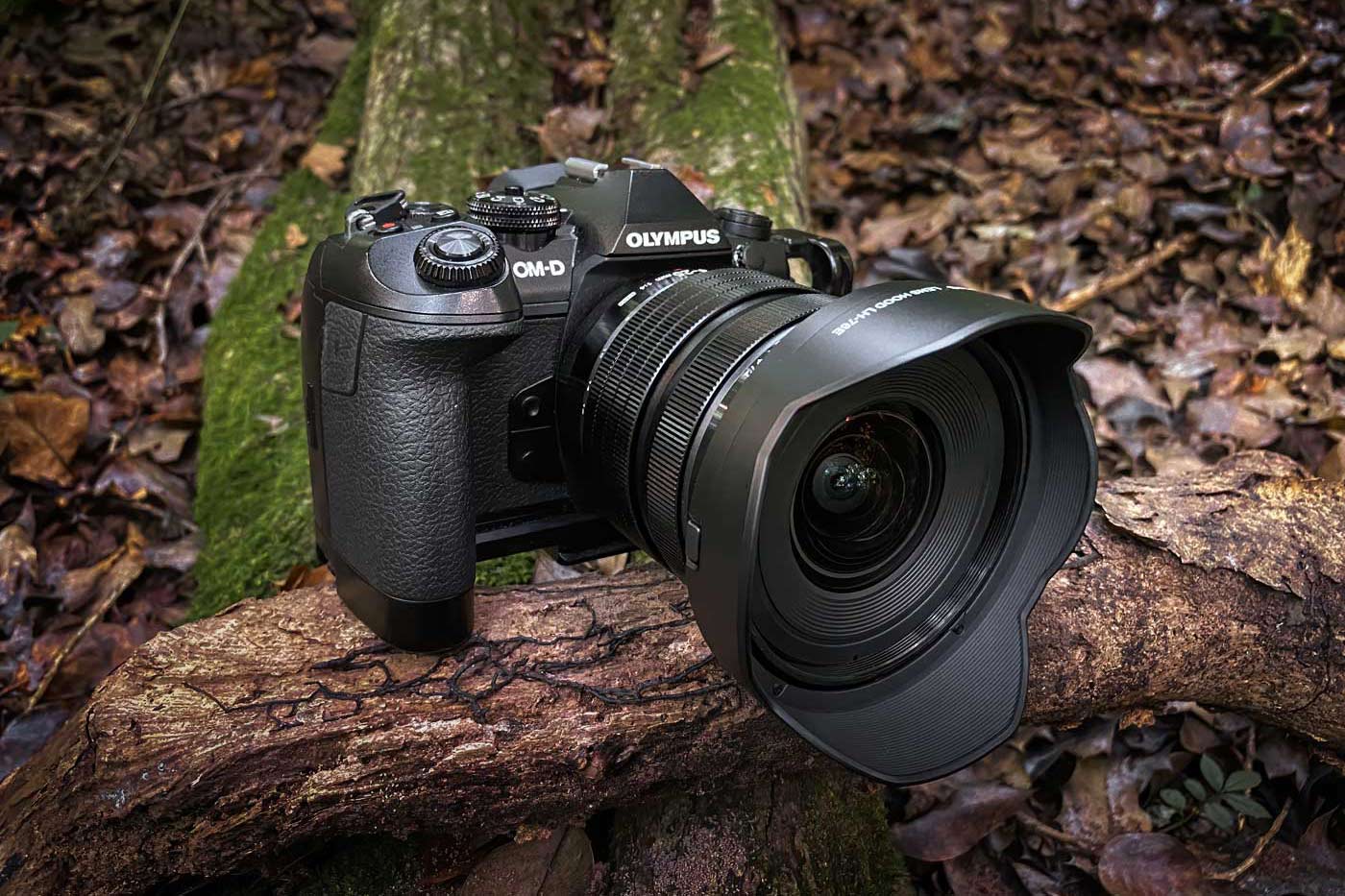Olympus M.Zuiko 8-25mm f4 Pro
When the new 8-25mm f4 Pro lens arrived from Olympus I was intrigued how it would compare to the amazing 7-14 f2.8 Pro lens, and why they would release a lens that is very similar albeit it slower. Read on for my first impressions…
I have been using the 7-14 Pro since it was released and being a landscape photographer I am a huge fan of ultra-wide lenses. have a look at my Gallery and you’ll see why. So why contemplate the 8-25mm? It has longer reach, very very slightly narrower, and a slower aperture at f4, so surely the 7-14 is going to be better for landscapes? The 7-14 isn’t without fault, that large convex element doesn’t allow filters without an additional adapter like my own 7-14 Adapter, and it is prone to flare, so the 8-25 addresses the first issue, I wanted to see if it would address the second issue.
Tech Specs
- 8-25mm FOV 107°-43°
- Constant f4 widest aperture, f22 narrowest
- 72mm lens thread
- Weight 410g
- Extending design-parked position 88mm high.
- 16 elements in 10 groups, 7 blade aperture
- Weather sealed as all Pro lenses
- Metal body with plastic extending barrel
- Manual clutch and L-Fn button.
Construction and materials are all you would expect from an Olympus Pro lens with metal body, the all important weather sealing, smooth action, and a useful L-Fn button which I actually use for Peaking. It has a manual clutch which I prefer not to use, but many do like it.
The fly in the ointment may be the plastic barrel. The lens features an extending barrel to keep size down, with a click of the zoom ring to unlock. It makes sense to do this and I personally don’t mind the plastic at all. It may be an issue of dropped, but I tend not to drop my lenses, so no issue.

Size and Weight
There isn’t a huge difference between the two lenses, but I guess that is relative, the 8-25 weighs 411g compared to 534g for the 7-14mm. At 120g difference, it is actually very noticeable, and all that extra weight is in the front element of the 7-14. But weight is really not why you would choose one over the other.
Height is 88.5mm without the hood attached, and for the 7-14 105mm including the hood.
Odd that Olympus would give sizes like this, for a fairer comparison the 8-25 including the hood is 118mm in the parked position. Extend it for use and it becomes 140mm.
What users really want to know is how does it perform?
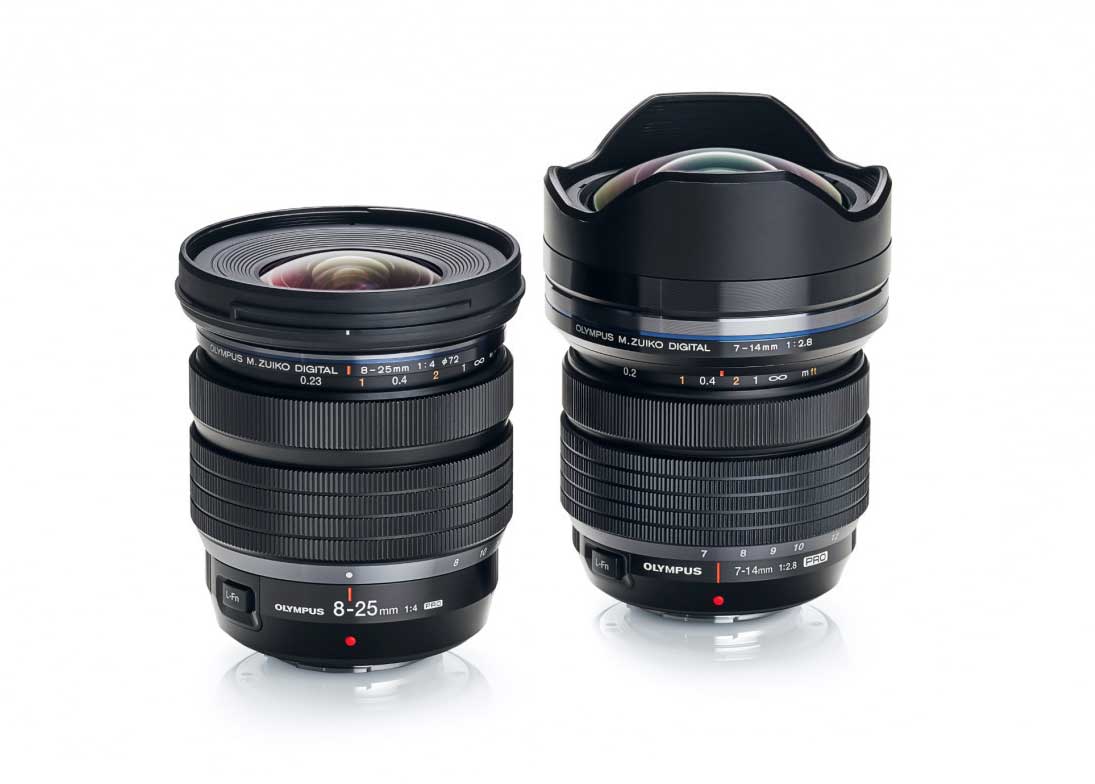
Real World Experiences
The very first thing I did when the 8-25 arrived was check what it would be like with flare. A very bright sunny day and a quick shot from my back door with the sun in the top right corner. I stopped the lens all the way down to f22, something I would never do but I wanted flare to be sharp and defined. With the 7-14 flare would have been very strong going diagonally right across the image, and very often resulting in a large red disc of sensor flare. Removing flare is not so easy, often there are details and edges that will be very hard to clone. It is easier to use the finger trick, covering the light source with a finger which removes the flare and taking another shot to blend together. It’s another process to do though and sometimes can still be tricky.
Notice the lack of flare here, just a few very small spots towards the centre, and a few spots near the sun burst. These would be very easy to clone out, and what is very interesting there’s no red blob from sensor flare. And the sun burst to me is cleaner and more pleasing.
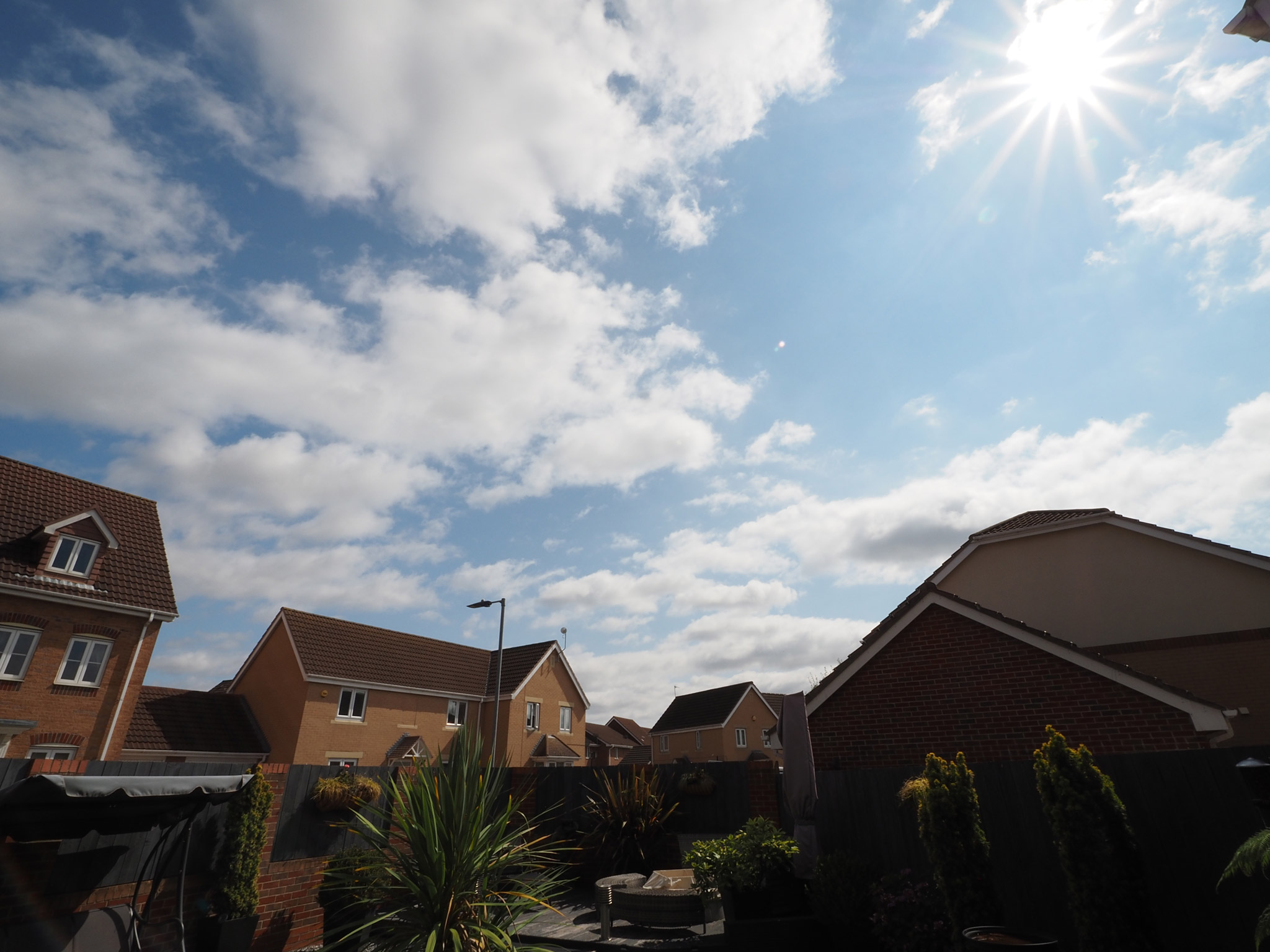
Olympus 7-14 Pro Lens Flare
Image 1 with flare
An example of the typical lens flare experienced with the 7-14 Pro lens when the sun is in the shot, or at the edge of the shot.
Admittedly it isn’t always as bad as this, it depends on the position of the sun in the frame, the intensity, and the angle of the camera.
There are small yellow flares which would be easy to clone out, much harder are the red flares because of the detail underneath. Sometimes the red flare can be larger but more subtle and perhaps not even noticed until the image is processed, and it can be a devil to remove. There are ways, but we want to reduce processing, not increase it.
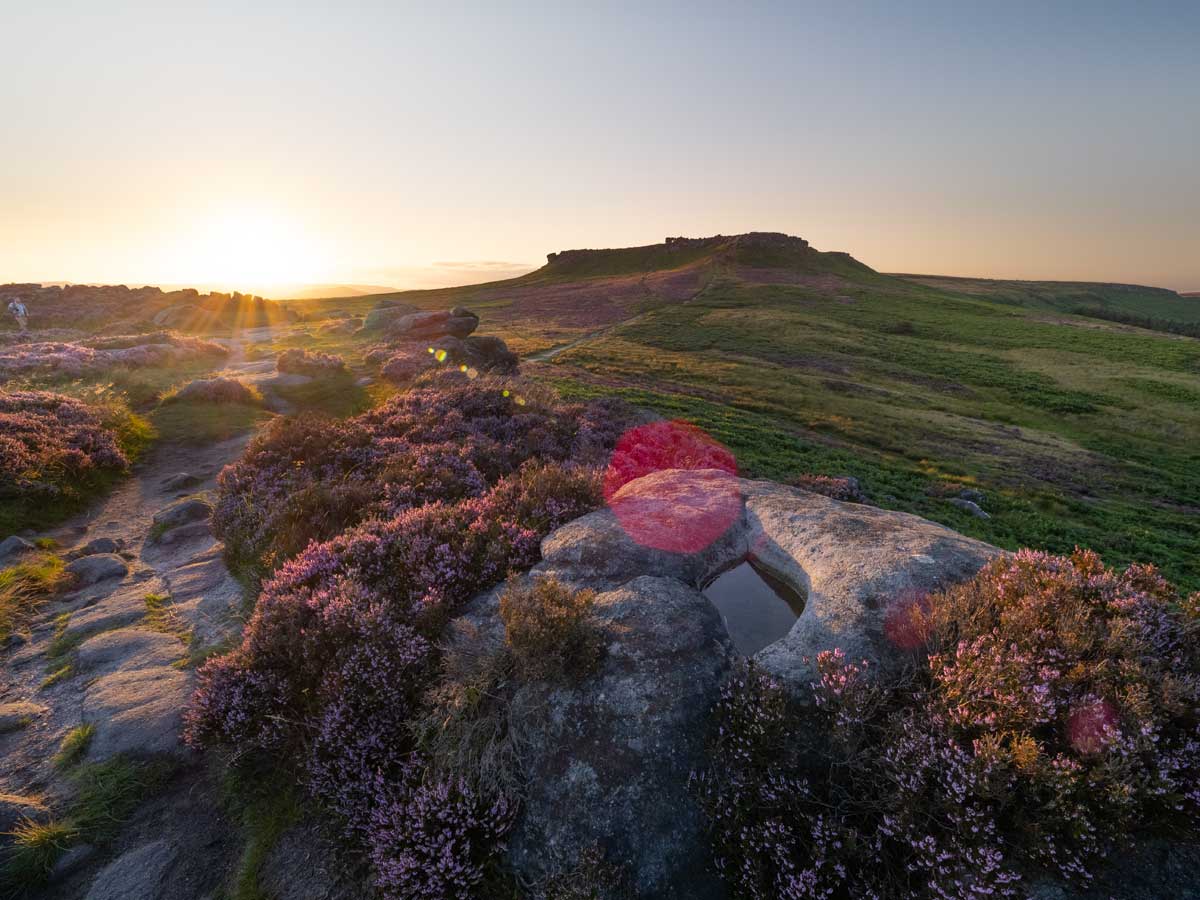
Image 2 the Old Finger Trick
Place a finger or two over the light source and the flare will be removed, resulting in two images that can be combined.
One thing to note is that your exposure will change because you have blocked the light source, so if shooting in AP or M, just make sure to check the exposure is good.
Image 1 has a slightly darker foreground, which doesn’t matter, I am replacing it anyway, the sky exposure is what matters.
And yes I know there was another photographer in both shots. It didn’t matter because the images were being blended and I knew he would not interfere. Pesky photographers…..
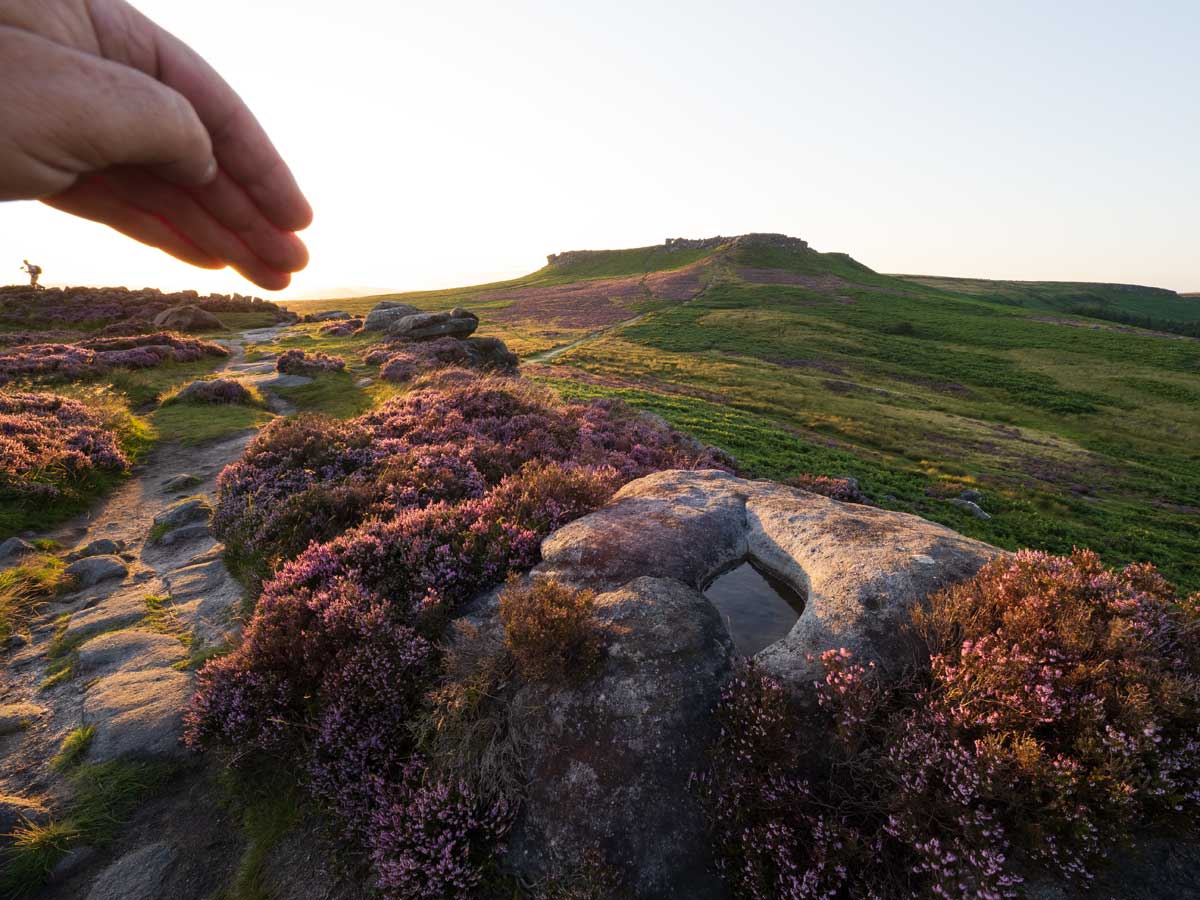
Finished Image
Both images are blended and the flare is removed. It is extra work, involving keeping track of the images you shoot, making sure you keep fingers above the horizon, and checking exposures are correct. But it is much faster and a cleaner way of removing bad flare than cloning.
The big question is, will the 8-25mm perform better?
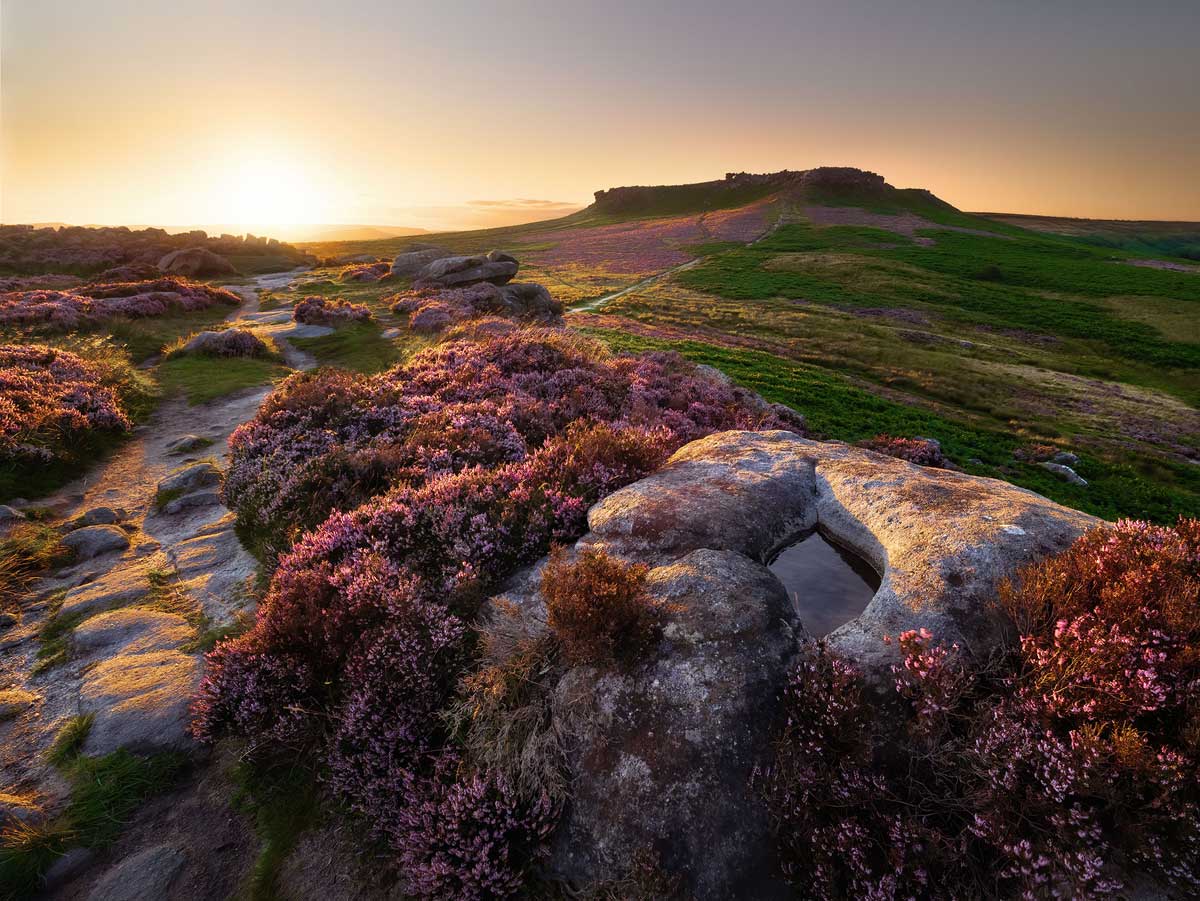
Olympus EM1-MK3, 7-14mm Pro, f7.1 1/30s ISO200-NiSi 3 stop Soft Graduated ND
Olympus 8-25 Pro Flare
A few images taken with the 8-25mm. Admittedly I have been busy with Workshops since I received this lens so I haven’t exactly tested it extensively, but the results do seem very promising so far. With that flat front element flare is controlled much better, as you would expect. So although it should perform better, it is still reassuring to see the results confirm it.
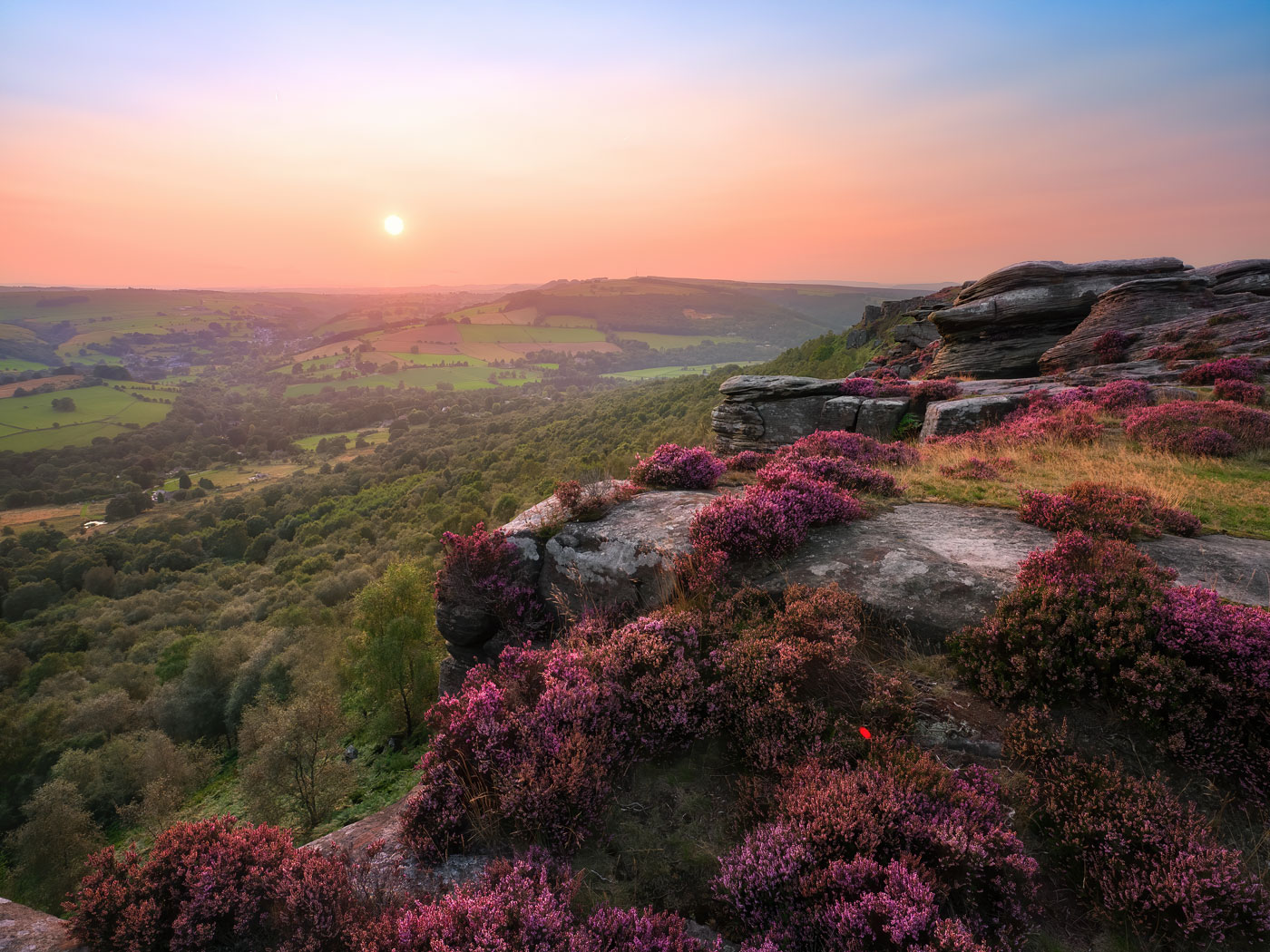
Olympus EM1-MK3, 8-25mm Pro @8mm, f7.1 1/20s ISO200 Nisi 3 Stop Medium Graduated ND
Curbar Edge – Peak District
A very quick shot whilst out on a workshop, I don’t make a habit of taking shots myself but my clients didn’t mind.
The Raw file was processed in my normal way in Lightroom and then I hop over to Photoshop where I prefer to do final colour balancing, cloning if needed and a check on levels. I normally do sharpening and noise reduction from PS using Topaz DeNoise as the last step, and then save as a Tiff using my Actions which will save the various versions I need for social media and my website.
Notice the lens flare, one small red blob over the heather. The sun was very soft with the amount of haze that built up on the horizon, so I would expect there to be more flare than this, but being as small as this it will be very easy to clone without needing to do the ‘finger’ trick.
Sharpness is very good as you would expect. It is sharp in the centre and in the corners wide open and at f6.3 at the widest end, and at 25mm is fractionally sharper wide open. But for me, I never worry too much about this, I have never had an Olympus Pro lens that isn’t sharp, and they will sharpen up just fine in post. I tend to shoot at f7.1 for depth of field knowing sharpness will not be an issue with such wide lenses.
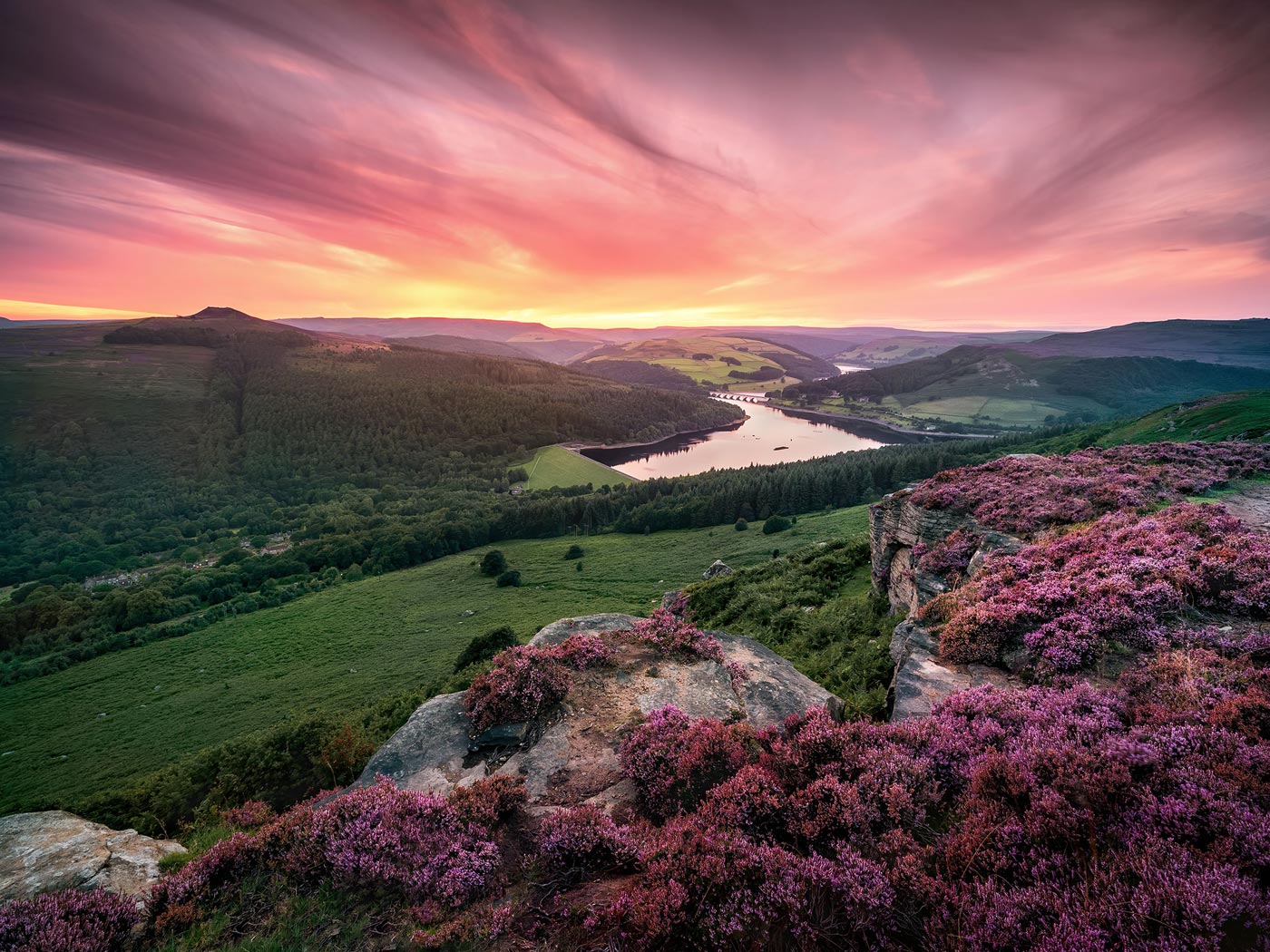
EM1-MK3 8-25mm Pro @8mm, f8 1s ISO200, NiSi 3 Stop Medium Graduated
Baslow Edge – Peak District
Another Workshop day and a trip up to Baslow Edge, one of the best views in the Peak District looking over Ladybower Reservoir.
We went up there because still being school holidays it was busy and this location is a little more of a hike to get to this point. But boy was it busy with people out to watch sunset.
Sunset was a let down after being promising most of the afternoon, as so often happens a bank of cloud built up on the horizon just at the last minute.
Still, for a few moments the sky just lit up as the sun fell below the horizon. There was a complete lack of flare, none whatsoever. With the 7-14 I would expect to have a little soft flare in the bottom right corner from a sky as bright as that.
Olympus 8-25 and Filters
Stop the press, finally we can use use filters with an Olympus Ultra Wide Pro lens.
Well we could before. I developed the 7-14 Adapter that would allow the use of 100mm filters which is all over the world now, and there are now other options too. But none will allow the use of a polariser easily. I like to use filters, and despite the arguments that graduated filters are redundant because of bracketing and blending (HDR) I still find they are important. Much better to get as close as you can to the final image in camera, and use 10 stop ND filters for long exposures.
72mm Thread and a Polariser
I use the NiSi 100mm slot in filter system, no surprises there, which suits 72mm thread very well. I prefer the ease of use with slot in square filters, being able to combine graduated filters with ND filters works for me, and also being able to use a polariser with an ND.
I prefer the ease of use with slot with square filters
One difficulty with circular filters is how much of an inconvenience it is screwing an ND into a polariser, keeping the polariser set at the right position, and removing them if the focus is not quite right.
Not an issue with slot in filters, just remove one, or remove the holder while you make adjustments.
The large circular filter pictured is the polariser which forms part of the lens adapter, and the filter holder attaches to it. The beauty of this is the polariser can be left on all the time, and protected with a cap when stowed away.
The important thing here though is that a circular polariser can now be used with an Olympus Ultra Wide Pro lens. Consideration has to be given when using polarisers to such wide lenses to avoid uneven polarisation, which isn’t a fault of the lens, or the polariser, it’s just physics of light. But we can now use one, and that is so good.
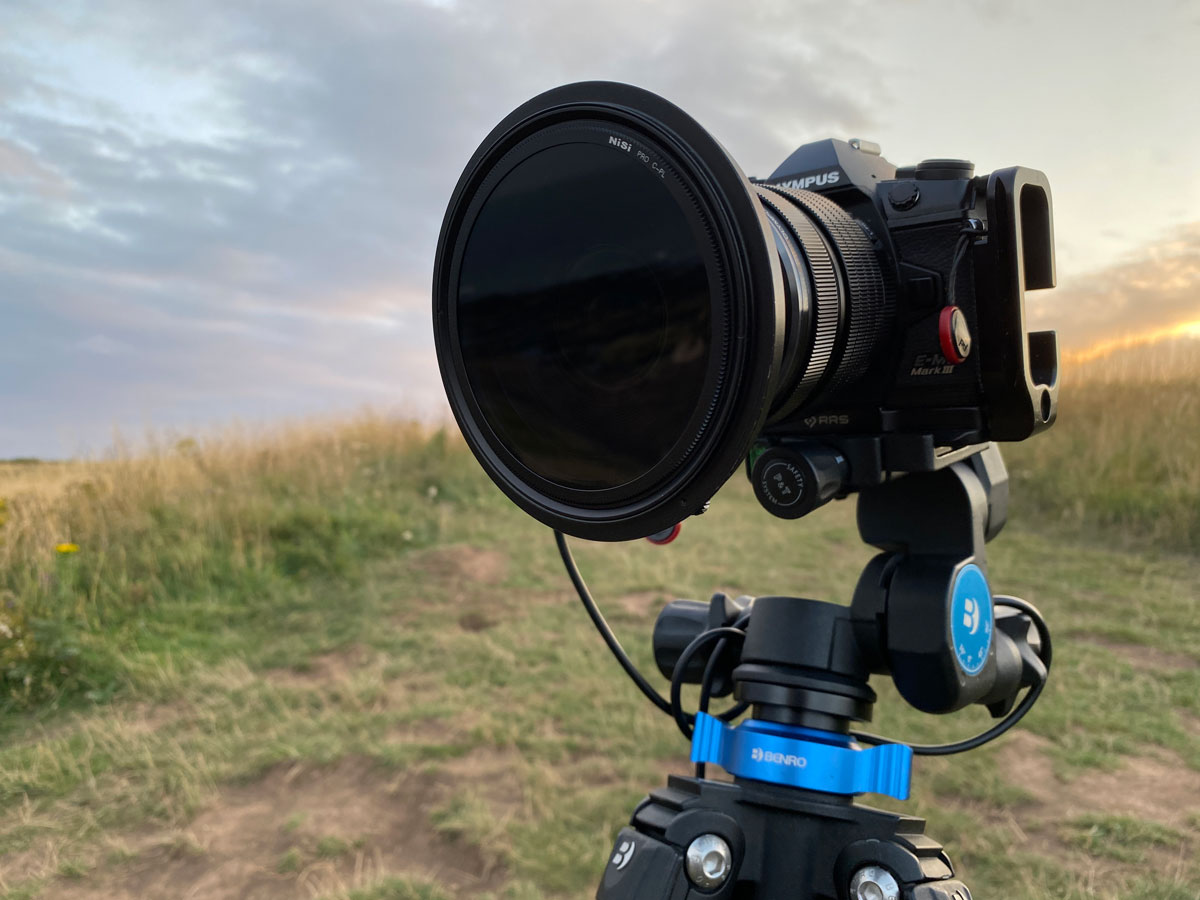
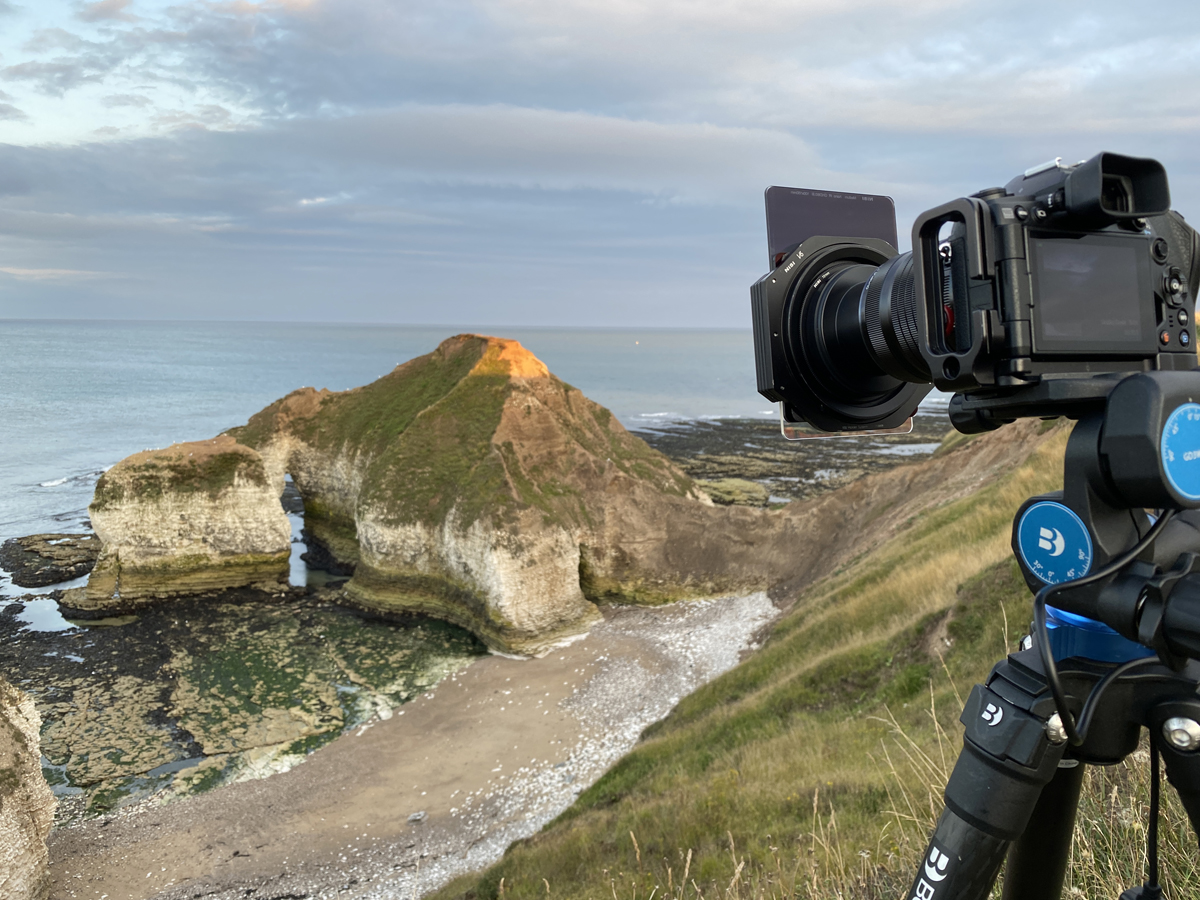
Flamborough Head – East Yorkshire
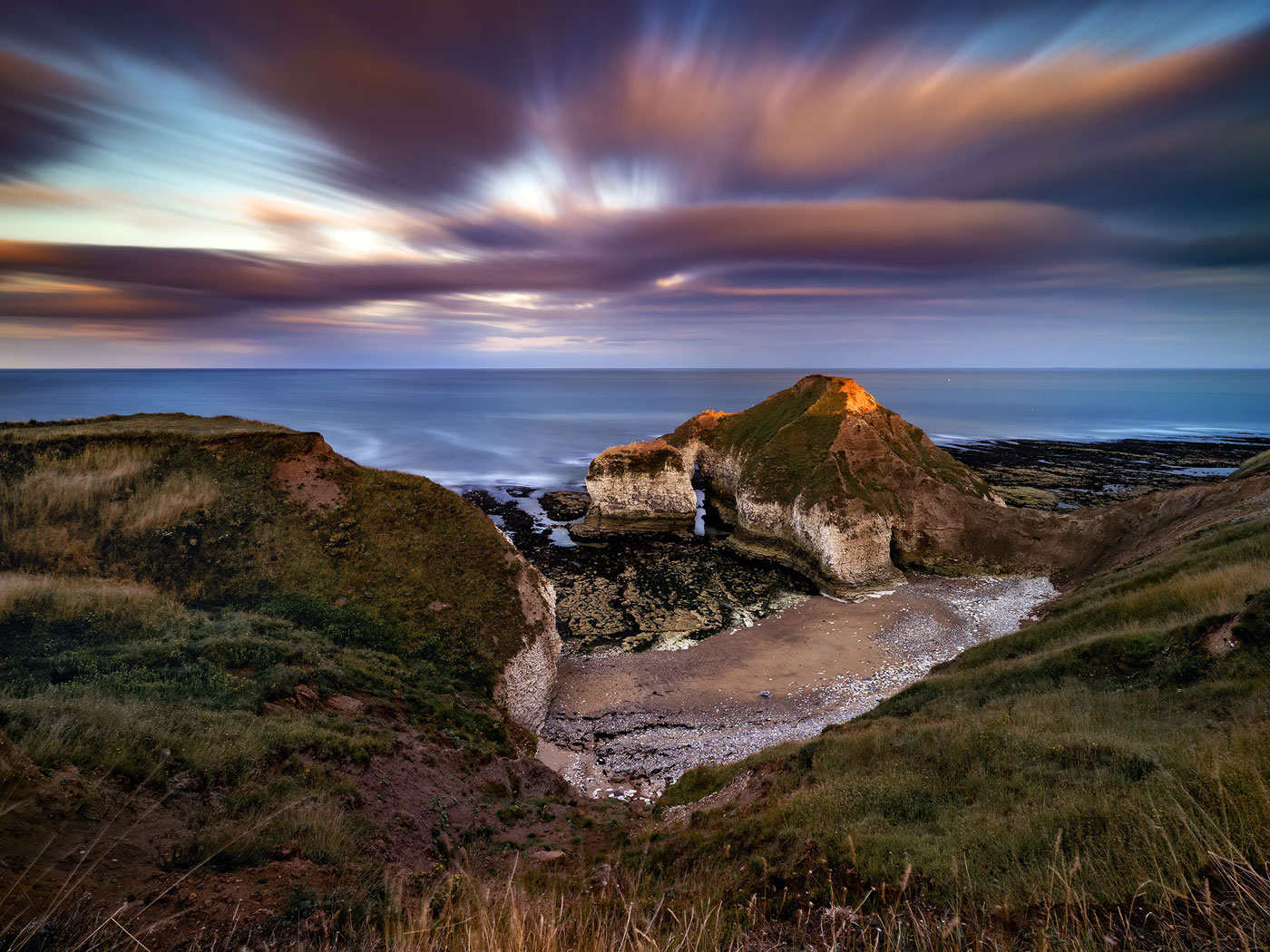
Olympus EM1-MK3, 8-25mm Pro @8mm, f7.1 90s ISO200 Nisi 10 Stop ND + 3 Stop Medium Graduated
The Drinking Dinosaur
I headed off to a favourite location on the East Coast and this sea arch affectionately known as the “Drinking Dinosaur”. It does look better with a high tide, but I was there to try out the 8-25 Pro with filters.
Although you can’t see them at this resolution, there were 5 or 6 seals taking a break resting on the black seaweed. They often come into this bay for a rest and to shout noisy at each other.
Was I expecting anything different using the 8-25mm lens and filters? And is there anything to report? Well not really, but suffice to say it is more convenient being able to use filters with a lens that has its own thread, without using any adapters. Not that there is anything wrong with the 7-14 Adapter, but using a polariser is still an issue
Have I mentioned being able to use a polariser? The polariser was used and gave much more definition to the sea water, deepening the tones and making the streaks in the water stand out more.
Wyming Brook, Peak District
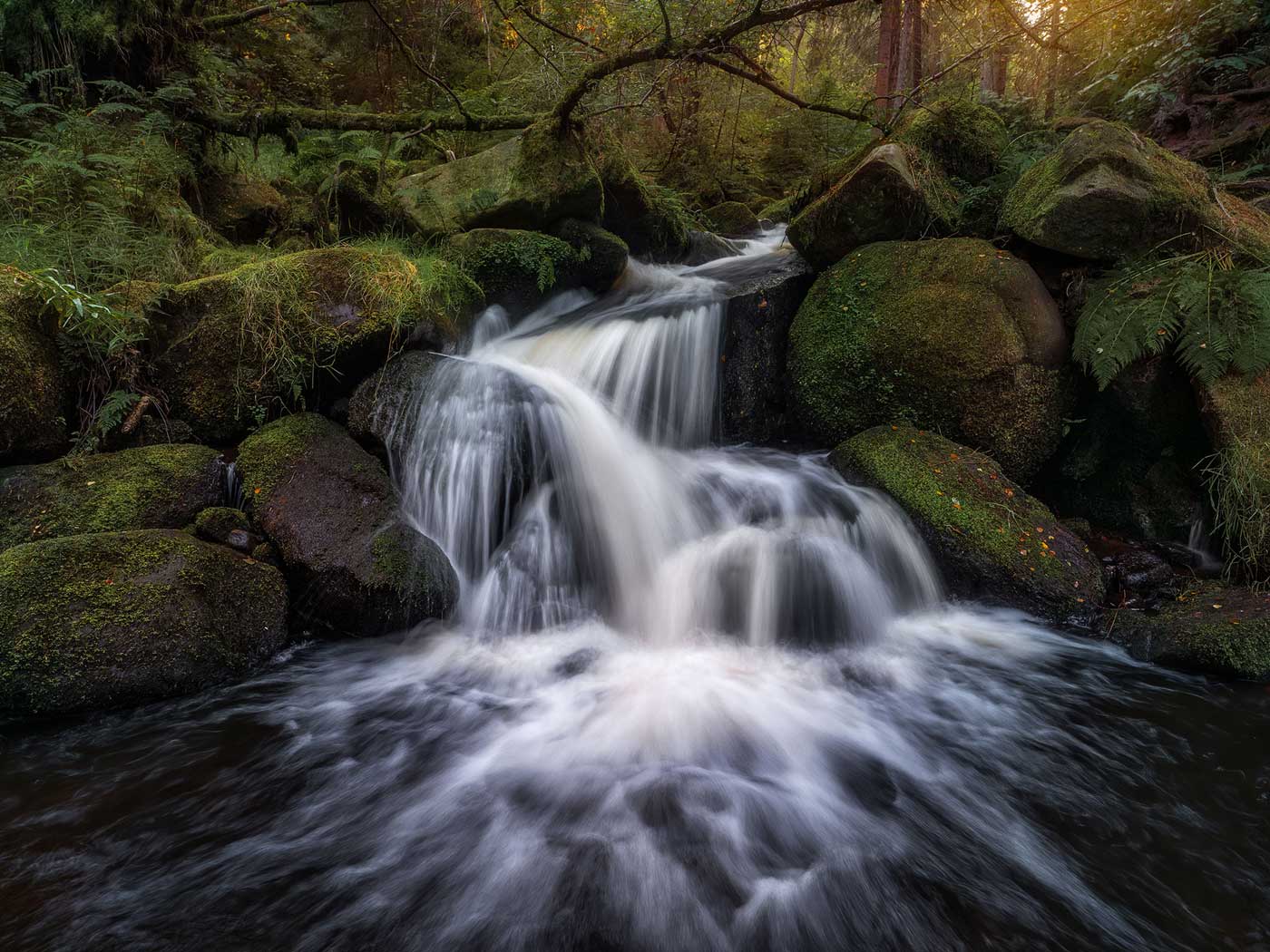
Olympus EM1-MK3, 8-25mm Pro @10mm, f6.3 1/3s ISO320 Nisi Landscape Polariser
Wyming Brook is a wonderful place, it meanders down a shallow gorge for around half a mile and has many little waterfalls like the one pictured. Good in any season, and also any light, although I do prefer a flat grey sky when sunlight isn’t going to create harsh highlights and contrast isn’t too extreme. I like to shoot images here quite dark to create a sense of intimacy and mystery.
A polariser is essential for locations like this, and it is not so much about reflections on the water, it is the the rocks and foliage. In some locations where there are foreground rocks in the water and in shadow, a polariser can make the water so dark that the rock almost vanishes, so its best to back the polariser off from full polarisation a little to allow a little light on the water surface.
The rocks, foliage and grass will always reflect light, in fact it is surprising just how much. A polariser removes the reflected light, allowing the tones and colours to be captured much more effectively.
Being able to use a circular polariser means I can make subtle adjustments to how much I need, whereas with the 7-14 only a square polariser could be used which limited the amount of adjustment possible

Was I expecting anything different using the 8-25mm lens and filters
Yes I know there are also two graduated filters in the holder too. One was used for the top of the image which I wanted to darken a little to keep the viewers eye where it should be, and another for the bottom of the image which was a little bright for my taste.
Summary
This is only intended to be first thoughts and I will add to it over the next few trips out. It does present a problem, and begs the question why did Olympus release a lens that would so obviously compete with the 7-14 f2.8 Pro. My sources at Olympus say two main reasons, one being the lack of filter compatibility, and weight. It is surprising how many people do question the weight.
The problem is now there are two choices. My attitude is choice is always good, even if it gives a headache trying to make a decision. And what would I recommend if asked, as I already have been. The 7-14 Pro has its place and will for some time, with that fast aperture it is ideal for astro. The 8-25 could be used but at a full stop slower it will not perform as well. If like me you do very little astro (although I always intend to), the 8-25 will be the ‘go-to’, although I will not be parting with the 7-14. And why not, it has nearly all of the best features of the 7-14 and addresses its faults. It will be interesting to see how many 7-14 Pros get traded in, or if it will still remain a favourite.
72mm lens thread, now possible to use filters and a polariser
- Lightweight and compact
- Parking position for stowage
- Sharp and well controlled distortion
- Sturdy construction and weather sealed
Any negatives?
Minor. The zoom ring to be is a little light, I would prefer a little more resistance to make it feel more assured, but it does not creep, even with filters and a holder on the end. It isn’t a big deal and I am sure I won’t even notice it over time, but it certainly is lighter than the 7-14.
I have never been a fan of the manual focus clutch, being easy to knock isn’t an issue once you get used to it. For someone like me who mostly uses auto focus, there are times when I need to switch to manual to lock it, such as for long exposures. The clutch disturbs focus when switching it to manual, so I use the Fn Lever and switch to back-button focus to lock the focus. There will be some cringing reading that I use auto-focus, I trust it far more than my own eyes even with peaking, which I have assigned to a button so I can enable it at will. For me the clutch would be better as just a switch, despite it being a clever design.
Final thought, the Olympus 8-25 f4 Pro is a great lens, and one that really should be considered.
Thank’s for looking and I hope you found it useful, please feel free to leave a comment and let me know your thoughts. For information on workshops in general or dedicated Olympus workshops please check the links below, and why not follow me on Social Media…
Phil


